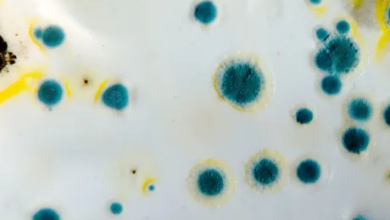
Filariasis is a parasitic disease caused by thread-like nematode worms, also known as filarial worms, that infect the lymphatic system and subcutaneous tissues of humans. The disease is transmitted by mosquito bites and is prevalent in tropical and subtropical regions, particularly in Africa, Asia, and the Western Pacific. If left untreated, filariasis can cause chronic, debilitating conditions such as lymphedema (severe swelling) and elephantiasis (thickening of the skin and tissues), which lead to disability and social stigma. In this article, we’ll explore the causes, symptoms, transmission, and treatment options like (vermact 6) for filariasis, as well as strategies for prevention and global efforts to eliminate the disease.
Understanding Filariasis: The Causes
Filariasis is primarily caused by three species of filarial worms:
- Wuchereria bancrofti: This species is responsible for over 90% of lymphatic filariasis cases worldwide. It primarily affects the lymphatic system, leading to the swelling of limbs, genitals, and breasts in severe cases.
- Brugia malayi: Found mostly in Southeast Asia, this worm species also causes lymphatic filariasis and produces similar symptoms as Wuchereria bancrofti, although it is less widespread.
- Brugia timori: This is the rarest species that causes lymphatic filariasis and is primarily found in Timor Island.
These worms are transmitted to humans through the bite of an infected mosquito, specifically from the genera Culex, Anopheles, Aedes, and Mansonia. The mosquitoes ingest the microfilariae (immature larvae) when feeding on an infected person’s blood. The larvae then develop within the mosquito and are passed on to the next person the mosquito bites. The larvae enter the lymphatic system, where they mature into adult worms over several months. Once mature, they can live for years and continue to reproduce, releasing microfilariae into the bloodstream to repeat the cycle.
Symptoms of Filariasis
The symptoms of filariasis vary depending on the severity of the infection and the specific species of worm involved. In the early stages, many individuals with Wuchereriasis may not experience any noticeable symptoms. However, as the disease progresses, it can lead to several health complications. The three primary stages of filariasis include:
- Asymptomatic Stage: During this stage, individuals may carry the filarial worms and microfilariae in their bloodstream without showing any outward signs of illness. This stage can last for years, allowing the disease to spread unknowingly through mosquito bites.
- Acute Stage: In this stage, individuals start experiencing acute symptoms such as fever, chills, and inflammation in the lymph nodes (lymphadenitis). Pain and swelling in the limbs, breasts, or genitals may occur due to the blockage of the lymphatic system by the adult worms. These acute episodes often last for several days and can be recurring.
- Chronic Stage: This stage is characterized by the severe swelling and thickening of the skin and underlying tissues, known as elephantiasis. The most commonly affected areas include the legs, arms, breasts, and genitals. In men, filariasis can also cause hydrocele (swelling of the scrotum). The chronic stage leads to disability, disfigurement, and social stigma, severely affecting the individual’s quality of life.
Diagnosis of Filariasis
Filariasis is diagnosed through clinical evaluation and laboratory tests. A doctor may suspect Wuchereriasis based on the patient’s symptoms and their history of living in or traveling to areas where the disease is endemic. The main diagnostic tests used to confirm the infection include:
- Blood Tests: A blood smear test is performed to detect microfilariae in the bloodstream. Since the microfilariae are most active at night, blood samples are typically collected during this time (nocturnal periodicity). Specialized tests, such as antigen detection or polymerase chain reaction (PCR), may also be used to detect the presence of filarial antigens or DNA in the blood.
- Ultrasound: Ultrasound imaging can help visualize the adult worms in the lymphatic system. It is often used to assess the extent of damage caused by the infection and guide treatment decisions.
Treatment of Filariasis
Treating Wuchereriasis involves eliminating the parasitic worms from the body and managing the symptoms caused by the infection. Several medications are used to kill the worms and prevent the progression of the disease.
Medications
- Diethylcarbamazine (DEC): This is the primary drug used to treat lymphatic filariasis. Diethylcarbamazine buy online from dosepharmacy that is highly effective at killing both adult worms and microfilariae. It is typically given as a short course of treatment (6-12 days) and can significantly reduce the parasite load in the body. DEC is often used in mass drug administration (MDA) programs to prevent the spread of filariasis in endemic areas.
- Ivermectin: This drug is also effective at killing microfilariae and is commonly used in combination with DEC or albendazole in MDA programs. Ivermectin is especially useful for treating onchocerciasis (river blindness), another filarial disease caused by Onchocerca volvulus.
- Albendazole: This antiparasitic drug is used in combination with DEC or ivermectin to enhance the effectiveness of the treatment. Mebendazole helps kill adult worms and disrupts their reproduction.
Management of Symptoms
In cases of chronic filariasis, where severe lymphedema or elephantiasis has developed, medical treatment alone may not be sufficient to reverse the damage. Instead, the focus shifts to managing symptoms and preventing further complications.
- Lymphedema Care: Proper hygiene and skin care are essential to prevent infections in areas affected by lymphedema. Patients are encouraged to wash the affected limbs regularly, moisturize the skin, and avoid injury to the swollen areas. In advanced cases, compression bandages or garments may be used to reduce swelling.
- Surgery: In some cases, surgical interventions may be necessary to treat complications such as hydrocele. Surgery can remove excess fluid from the scrotum, providing relief from discomfort and restoring normal function.
Prevention of Filariasis
Prevention is critical in reducing the burden of filariasis in endemic regions. Several strategies have been implemented to prevent the transmission of filarial worms and protect communities from infection.
Mass Drug Administration (MDA)
The WHO has launched several global initiatives aimed at eliminating filariasis as a public health problem. Mass drug administration (MDA) programs involve distributing antiparasitic medications (such as DEC, ivermectin, and albendazole) to entire at-risk populations, regardless of whether individuals show symptoms. These programs are designed to interrupt the transmission cycle by killing the microfilariae in infected individuals, reducing the number of infectious mosquitoes and preventing new cases.
Vector Control
Since filariasis is transmitted by mosquitoes, controlling the mosquito population is essential for preventing the spread of the disease. This can be achieved through several methods:
- Use of Insecticide-treated Bed Nets (ITNs): Sleeping under ITNs helps protect individuals from mosquito bites and reduces the risk of filariasis transmission.
- Indoor Residual Spraying (IRS): Spraying insecticides inside homes can kill mosquitoes and reduce their population, especially in areas where transmission rates are high.
- Environmental Management: Reducing mosquito breeding sites, such as stagnant water, helps to control the mosquito population. This can be achieved through community efforts to clean up the environment and eliminate sources of standing water.
Global Efforts to Eliminate Filariasis
Significant progress has been made in the global fight against filariasis. The WHO’s Global Programme to Eliminate Lymphatic Filariasis (GPELF) aims to eliminate the disease as a public health problem through mass drug administration and vector control measures. Since the program’s inception, millions of people have been treated, and the prevalence of filariasis has decreased significantly in several countries. The goal is to achieve the elimination of filariasis by 2030 in all endemic regions.
Conclusion
Filariasis is a parasitic disease that poses a significant public health challenge in many tropical and subtropical regions. While the infection can lead to chronic, debilitating conditions such as lymphedema and elephantiasis, effective treatments and preventive measures are available. Medications such as diethylcarbamazine, ivermectin, and albendazole can eliminate the parasites and stop the progression of the disease. Prevention strategies, including mass drug administration and mosquito control, play a crucial role in reducing transmission and protecting communities from filariasis. With continued global efforts, the elimination of filariasis as a public health problem is within reach.



